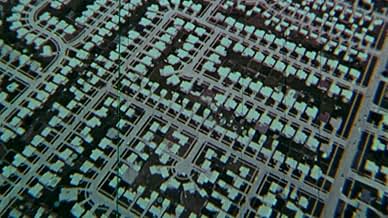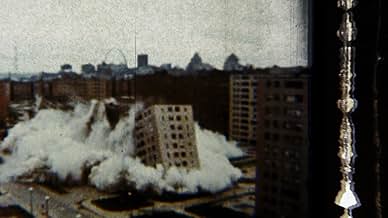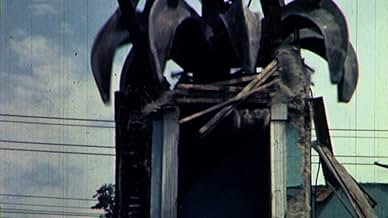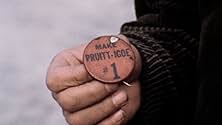Ajouter une intrigue dans votre langue2011 "The Pruitt-Igoe Myth" explores the rise & fall of titular housing complex in St. Louis, examining racism & gov. Policies through interviews with former residents & historical footage. ... Tout lire2011 "The Pruitt-Igoe Myth" explores the rise & fall of titular housing complex in St. Louis, examining racism & gov. Policies through interviews with former residents & historical footage. Ft racism, urban poverty & inequality in America.2011 "The Pruitt-Igoe Myth" explores the rise & fall of titular housing complex in St. Louis, examining racism & gov. Policies through interviews with former residents & historical footage. Ft racism, urban poverty & inequality in America.
- Director
- Writers
- Stars
- Prix
- 2 victoires et 2 nominations au total
Irvin Dagen
- Self - St. Louis Housing Authority
- (archive footage)
Elmer Fiedler
- Self - Black Jack Baptist Church
- (archive footage)
- (as Rev. Elmer Fiedler)
Robert Schuchardt
- Self - Zoning Commission Chairman
- (archive footage)
- (as Dr. Robert Schuchardt)
Avis en vedette
Pruitt-Igoe was among the largest projects of urban revitalization during its time. It was designed to be a cure for the disease of poverty and slums, in which the city and community alike would thrive. The Pruitt-Igoe myth documentary does an outstanding job of painting a vivid picture for one to visualize, the many hardships the residents faced. It concentrated on the issues that lead to the demise, the suffering and segregation but also the positive effects that it had on many people's lives.
Initially the residents were extremely excited to move into the community. They described it as a utopia and safe haven as well as a resort. People that lived in the Pruit-Igoe community claim that there was once a sense of community and that at a certain time period "it was full of electric engaging life". However, the green grass and playgrounds didn't last, and soon later the deterioration of the buildings became significantly of concern. Matters were so terrible that people would actually defecate in the elevator and stairs, and burn neighboring apartments. However, professionals claim that this was their unique cry for help. What was the causation of these failures you may ask yourself? Much blame the architect; others blame the welfare state, while others put to blame the people that resided there.
The city of St. Louis was expected to grow exponentially during this time frame that the project was being innovated. However, plans didn't go as expected. The city shrunk by 20%, which lead to homes being vacant causing a cascade effect full of negative impacts for the city to endure. Whites moved to the suburbs, and took the jobs with them; this became an even bigger problem because now not only were there vacant homes and apartments but also no jobs to pay for rent. This is one of the main issues to the demise of Pruitt and Igoe. The main idea was that the maintenance would be funded by rent paid by the tenants. It seems like an ingenious plan, where the buildings were basically going to maintain themselves without the input of state or government funding. Nevertheless, no one expected the city to decline greatly and for jobs to move out of reach. This predicament made it nearly impossible for residents to establish a secure form of employment. Thus no employment meant that rent met would not be met, therefore causing a deficit in resources for the maintenance department. After the buildings resort type facade diminished, tenants that had the means to escape left while persons with little to no resources stayed behind. This created segregation within the community, because as suburbs were being built and desirable areas within the city suffered from gentrification, low income individuals were essentially forced to move into Pruitt and Igoe.
Another important aspect that the film focuses on is the terrible violence and crime that the community underwent. It became a safe haven for drug dealers and murderers since the buildings were extremely vacant, criminals could easily handle their unlawful activities while remaining under the radar. Pruit-Igoe became representative of black; poverty, crime, and drug abuse. Community activists actively spoke to city officials in an effort to deal with the wrongdoings that the neighborhood was actively facing daily. However, the police blamed the mayor, while the mayor, blamed the state and Washington. It was a cycle of pointing fingers where the people left to suffer without remorse were the residents. Matters became so terrible that police and firemen stopped showing up to the area. Not only is the city to blame but also the tenants, because they would throw fire bombs at the same people that are supposed to protect them. It's extremely counter intuitive from their part. However as before mentioned this was a way of the tenants of demonstrating that they didn't like the conditions in which they were living. An important point made by the film was the many strict laws that the tenants had to abide by in order to have a roof over their head. If the government was going to support them and give them a few extra dollars, they then had to abide by the cruel rules. Residents were not allowed to own a television, or telephone. They felt segregated and isolated; many claim that it felt like a prison environment. Wouldn't you agree? It almost seems to me in my personal opinion as though the government was attempting to keep blacks dependent on the system, virtually modern day slavery where they control their every action and future as well as their children's future-one vicious cycle it all adds to urban issues that we still face to date. However the most absurd rule of all was the fact that men couldn't live in the projects, what's the rationale behind this concept? Splitting of families, kids growing up without father figures, leaving women vulnerable to criminals is what the foolish regulation caused. There was no morality being presented to these helpless individuals, they were treated inhumane and split of their naturalistic rights.
With accordance to the film, many people have very good memories of living in Pruitt and Igoe. The nostalgia of dancing in the halls and playground during Christmas brings nothing but tears of joy to their eyes, and the smell of baked goods coming from their neighbors windows brought the simplest of happiness. And although there were many negative phases that were lived many rather looks at the positive memories. It's extremely difficult to figure the source of the demise to this day, as we still face a huge dilemma with public housing. Nevertheless it's safe to say that everyone was at fault; the architect, government, and residents. Not for the source of the problem, since cities change with regards to population and capital, rather for allowing the predicament to reach such a cruel and inhumane way of living.
Initially the residents were extremely excited to move into the community. They described it as a utopia and safe haven as well as a resort. People that lived in the Pruit-Igoe community claim that there was once a sense of community and that at a certain time period "it was full of electric engaging life". However, the green grass and playgrounds didn't last, and soon later the deterioration of the buildings became significantly of concern. Matters were so terrible that people would actually defecate in the elevator and stairs, and burn neighboring apartments. However, professionals claim that this was their unique cry for help. What was the causation of these failures you may ask yourself? Much blame the architect; others blame the welfare state, while others put to blame the people that resided there.
The city of St. Louis was expected to grow exponentially during this time frame that the project was being innovated. However, plans didn't go as expected. The city shrunk by 20%, which lead to homes being vacant causing a cascade effect full of negative impacts for the city to endure. Whites moved to the suburbs, and took the jobs with them; this became an even bigger problem because now not only were there vacant homes and apartments but also no jobs to pay for rent. This is one of the main issues to the demise of Pruitt and Igoe. The main idea was that the maintenance would be funded by rent paid by the tenants. It seems like an ingenious plan, where the buildings were basically going to maintain themselves without the input of state or government funding. Nevertheless, no one expected the city to decline greatly and for jobs to move out of reach. This predicament made it nearly impossible for residents to establish a secure form of employment. Thus no employment meant that rent met would not be met, therefore causing a deficit in resources for the maintenance department. After the buildings resort type facade diminished, tenants that had the means to escape left while persons with little to no resources stayed behind. This created segregation within the community, because as suburbs were being built and desirable areas within the city suffered from gentrification, low income individuals were essentially forced to move into Pruitt and Igoe.
Another important aspect that the film focuses on is the terrible violence and crime that the community underwent. It became a safe haven for drug dealers and murderers since the buildings were extremely vacant, criminals could easily handle their unlawful activities while remaining under the radar. Pruit-Igoe became representative of black; poverty, crime, and drug abuse. Community activists actively spoke to city officials in an effort to deal with the wrongdoings that the neighborhood was actively facing daily. However, the police blamed the mayor, while the mayor, blamed the state and Washington. It was a cycle of pointing fingers where the people left to suffer without remorse were the residents. Matters became so terrible that police and firemen stopped showing up to the area. Not only is the city to blame but also the tenants, because they would throw fire bombs at the same people that are supposed to protect them. It's extremely counter intuitive from their part. However as before mentioned this was a way of the tenants of demonstrating that they didn't like the conditions in which they were living. An important point made by the film was the many strict laws that the tenants had to abide by in order to have a roof over their head. If the government was going to support them and give them a few extra dollars, they then had to abide by the cruel rules. Residents were not allowed to own a television, or telephone. They felt segregated and isolated; many claim that it felt like a prison environment. Wouldn't you agree? It almost seems to me in my personal opinion as though the government was attempting to keep blacks dependent on the system, virtually modern day slavery where they control their every action and future as well as their children's future-one vicious cycle it all adds to urban issues that we still face to date. However the most absurd rule of all was the fact that men couldn't live in the projects, what's the rationale behind this concept? Splitting of families, kids growing up without father figures, leaving women vulnerable to criminals is what the foolish regulation caused. There was no morality being presented to these helpless individuals, they were treated inhumane and split of their naturalistic rights.
With accordance to the film, many people have very good memories of living in Pruitt and Igoe. The nostalgia of dancing in the halls and playground during Christmas brings nothing but tears of joy to their eyes, and the smell of baked goods coming from their neighbors windows brought the simplest of happiness. And although there were many negative phases that were lived many rather looks at the positive memories. It's extremely difficult to figure the source of the demise to this day, as we still face a huge dilemma with public housing. Nevertheless it's safe to say that everyone was at fault; the architect, government, and residents. Not for the source of the problem, since cities change with regards to population and capital, rather for allowing the predicament to reach such a cruel and inhumane way of living.
The Pruitt-Igoe housing projects are currently remembered as one of the worst disasters in federal housing history. There has been ample debate among academics as to why, ranging from architectural problems to poor planning to demographic shifts in the city of St. Louis. This new documentary mostly looks at the latter two ideas and does not interview architects but rather former residents of the projects. Their stories vary from uplifting to tragic and detail the many problems with Pruitt-Igoe. Mostly the film suggests that the depopulation of the city following the explosion of suburban society in the 1950s is to blame for the project's failure. With fewer people there was less of a need for the massive buildings and with a smaller tax base it was impossible to maintain the expensive structures. What the film does show is that most of the people who lived there were decent folks hoping to make a new life, and that it was mostly the outside world that undermined the projects. The director uses several excellent shots including the image of the collapsing towers (they were demolished in the 1970s). Overall he does a superb job of telling a very intriguing and moving story while stimulating a debate on the future of federal housing.
The movie includes fascinating archival footage and interviews with five former residents of the public housing development. Some of these residents talked about the joyful experiences they had there, while others told harrowing stories. One of the most interesting things was listening to why they moved to the project initially. They told of how exciting it was to get into a modern development.
The movie also suggests some causes for the decline of the project, such as population loss in St. Louis, lack of funding for maintenance, and the loss of manufacturing jobs to the suburbs. When I discussed the movie with friends afterwards, we remained unsure in our speculation about the true causes.
The movie also suggests some causes for the decline of the project, such as population loss in St. Louis, lack of funding for maintenance, and the loss of manufacturing jobs to the suburbs. When I discussed the movie with friends afterwards, we remained unsure in our speculation about the true causes.
I watched this last night for the first time and afterwords I just wanted to find a government employee and slap them. I have always been of the opinion that the government has no business in the business of housing. The tragic story of Pruitt Igoe proves that our government at every level is unable to manage housing and needs to get out of it. This documentary focuses on actual residents of the projects who tell the most interesting stories of the years they spent living there. Many of their memories are happy ones of when the project was brand new and that the residents did appreciate the modern apartments they had. The problem was the completely stupid welfare policies, funding policies and many structural features of the buildings themselves. Had the government kept families together instead of ripping them apart and kept up on the maintenance and security budgets these apartments might still be there today providing much needed housing. The vintage file footage of the projects, especially the interiors was very cool and interesting. I came away with a much better understanding of what the issues were contributing to the failure of the projects. This is a must see for anyone interested in the history of public housing in America.
The Pruitt-Igoe housing development in St. Louis is the focus of this film, but it could have just as soon been Cabrini-Green in Chicago or any one of a number of similar projects across the American big cities. It's an exploration as to why these huge public housing projects became hellish instead of the paradises they were originally envisioned. Fortunately, the filmmakers don't pick any one or two simple answers but talk about the multitude of issues that led to the projects failing...and ultimately being demolished. Among the problems discussed in the film were the lack of jobs as businesses and middle classes migrated to the suburbs, the increase of violence and vandalism, lack of maintenance, segregation as well as the insane notion that in order to get public assistance that fathers could not remain in the home!
This documentary is depressing and few folks would enjoy watching it. Now I am NOT saying it's bad and it's good for folks to become familiar with the issues that come up in the film. But it's just not the sort of thing most people would choose to watch and is probably more a film that educators might show to sociology or other such classes in order to explain the failures of these programs. Interesting and well made...despite it being such a terrible story.
This documentary is depressing and few folks would enjoy watching it. Now I am NOT saying it's bad and it's good for folks to become familiar with the issues that come up in the film. But it's just not the sort of thing most people would choose to watch and is probably more a film that educators might show to sociology or other such classes in order to explain the failures of these programs. Interesting and well made...despite it being such a terrible story.
Le saviez-vous
- AnecdotesNot Mentioned - The Pruitt-Igoe complex was designed by the architect Minoru Yamasaki (1913-1986) who also designed the World Trade Center and the main terminal at the St. Louis - Lambert International Airport.
- ConnexionsReferenced in Target: St. Louis (2018)
- Bandes originalesThe World is Changing
By Lavel Moore
Licensed by Numero Group, Chicago, IL
Meilleurs choix
Connectez-vous pour évaluer et surveiller les recommandations personnalisées
Détails
Box-office
- Brut – États-Unis et Canada
- 44 883 $ US
- Fin de semaine d'ouverture – États-Unis et Canada
- 4 721 $ US
- 22 janv. 2012
- Brut – à l'échelle mondiale
- 44 883 $ US
- Durée
- 1h 19m(79 min)
- Couleur
- Rapport de forme
- 16:9 HD
Contribuer à cette page
Suggérer une modification ou ajouter du contenu manquant






